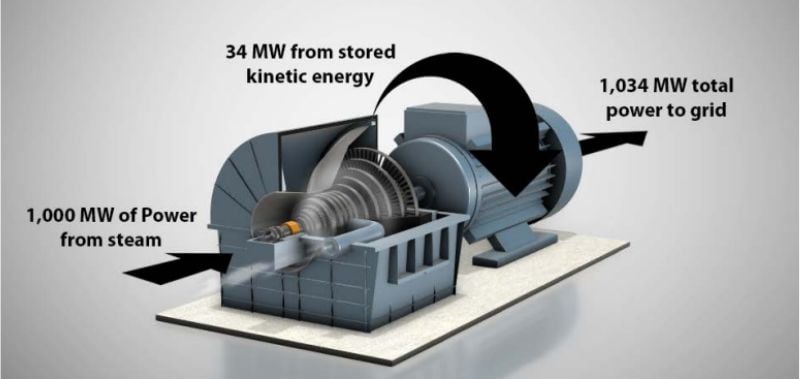Harnessing Hydropower Inertia for Improved Grid Stability
Oak Ridge National Laboratory has introduced an algorithm to assess the behavior of pumped storage hydropower systems. The method could make renewable energy use more dependable.
Concerns about grid stability are growing as more renewable energy sources are adopted.
Inverter-connected resources, like solar and wind, respond inefficiently to rapid changes in the grid’s load and leave the grid vulnerable to sudden failures.
Hydropower systems, on the other hand, have the unique property of inertia, making them well positioned to enable greater grid stability. Recently, a team of researchers from Oak Ridge National Laboratory (ORNL) created a method to calculate the power grid’s inertia for use in improving grid stability.
Hydropower system. Image used courtesy of the Department of Energy
What exactly is grid inertia, and how did the researcher leverage it?
Hydropower and Inertia
While hydropower has many benefits in renewables, one less-discussed benefit is its inertia.
A specialized form of hydropower known as pumped storage hydropower (PSH) operates by drawing electricity from the grid during low-demand periods to pump water from a lower to an upper reservoir, effectively storing energy. This stored energy is released during high-demand periods by allowing water to flow back to the lower reservoir and through a series of water turbines, thereby generating electricity.
Inertia in a 1,000 MW generator. Image used courtesy of NREL
In the context of these systems, inertia describes the kinetic energy stored within the rotating turbines that gives them the propensity to remain rotating even after forces are no longer applied. This stored energy means that even if power is shut off or if the plant fails, energy will be produced by the turbines for a couple of seconds following the failure. Hence, inertia in these systems acts as a buffer against the variability and intermittency of sources like wind and solar. This buffering capacity helps maintain grid stability by ensuring a consistent frequency and voltage as the power supply fluctuates, thus facilitating a reliable electricity supply amidst diverse energy sources.
Unfortunately, sources like wind and solar are connected to the grid via inverters and provide minimal inertia. The result is a grid system that is less capable of tolerating sudden changes, making the grid more susceptible to instability. Therefore, researchers believe hydropower, specifically PSH, is becoming increasingly significant as a means to increase the grid's ability to maintain stability in the face of fluctuating supply and demand conditions.
ORNL Hydropower Research
Recognizing the challenges posed by integrating renewable energy sources, the ORNL team sought to harness hydropower’s inherent properties to mitigate these effects. The team developed a method using the frequency response signals generated by hydropower plants to monitor and assess grid stability in real time.
FNET/GridEye real-time frequency contour map. Image used courtesy of Liu et al.
This method involves analyzing the precise moments when a PSH plant's pumps transition from operational to non-operational states, known to occur at fixed power levels. These transitions emit unique signals within the grid, offering a clear indicator of the grid's overall inertia. To capture this data, the team leveraged FNET/GridEye, a wide-area frequency measurement network, to capture the unique signals generated by hydropower plants during pump transitions.
This data, analyzed through a sophisticated visualization interface, allowed researchers to accurately assess grid inertia and stability in real time.
ORNL’s Hydropower Research Implications
The research results have significant implications. By providing a more accurate and timely measurement of grid stability, the ORNL's method allows for more effective integration and management of renewable energy sources. This may improve the reliability and efficiency of power grids, reducing the risk of outages and supporting the broader adoption of sustainable energy sources.
The research represents a critical step towards achieving a more sustainable and resilient energy infrastructure. By seamlessly integrating renewable energies into the grid, ORNL's work contributes to the global transition toward more sustainable energy systems.









